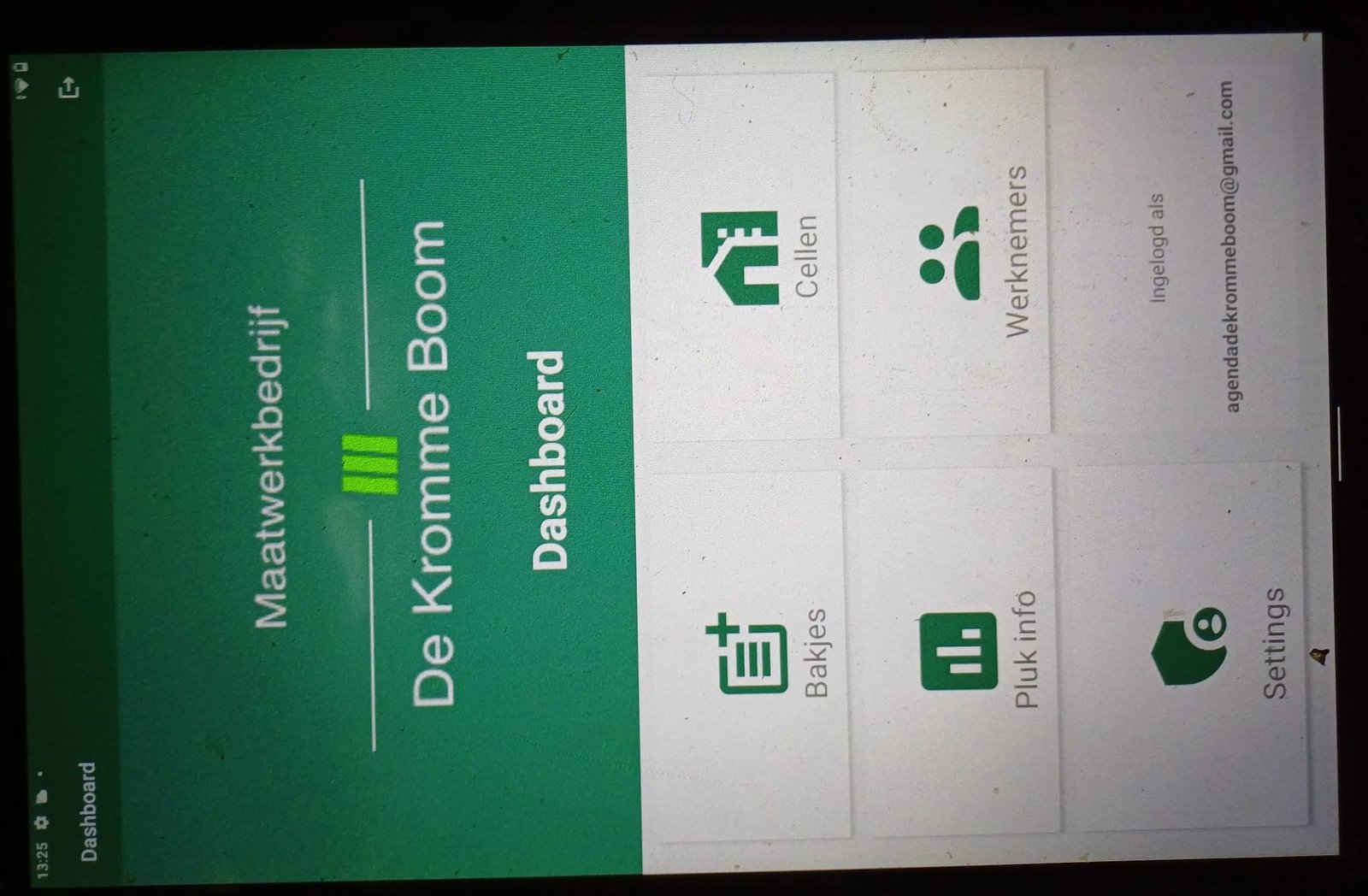
VZW De Kromme Boom (Free)
In recent months I have been working on a project that revolves around data registration (mainly, how many and which bkajes, kilo/gram per pack and total number of trays with total price). Everything is preliminary with an MVVM framework all set to be finished as a modular monolithic application.
The Problem: Real time Entry of correct data with the least possible loss of time
We noticed that the data was not coming in, was incomplete or wrong, so after some field analysis and log inspection we made some conclusions and improved the application input.
In a few months, I created a software solution with the following preferences, based on the MVVM framework (read more about it) and the architecture is now ready as a monolithic component besed system, to be done on the device itself rather than on a server. This app has undergone several test phases. It needed to ensure that as many employees with limitations as possible could use the system without errors.
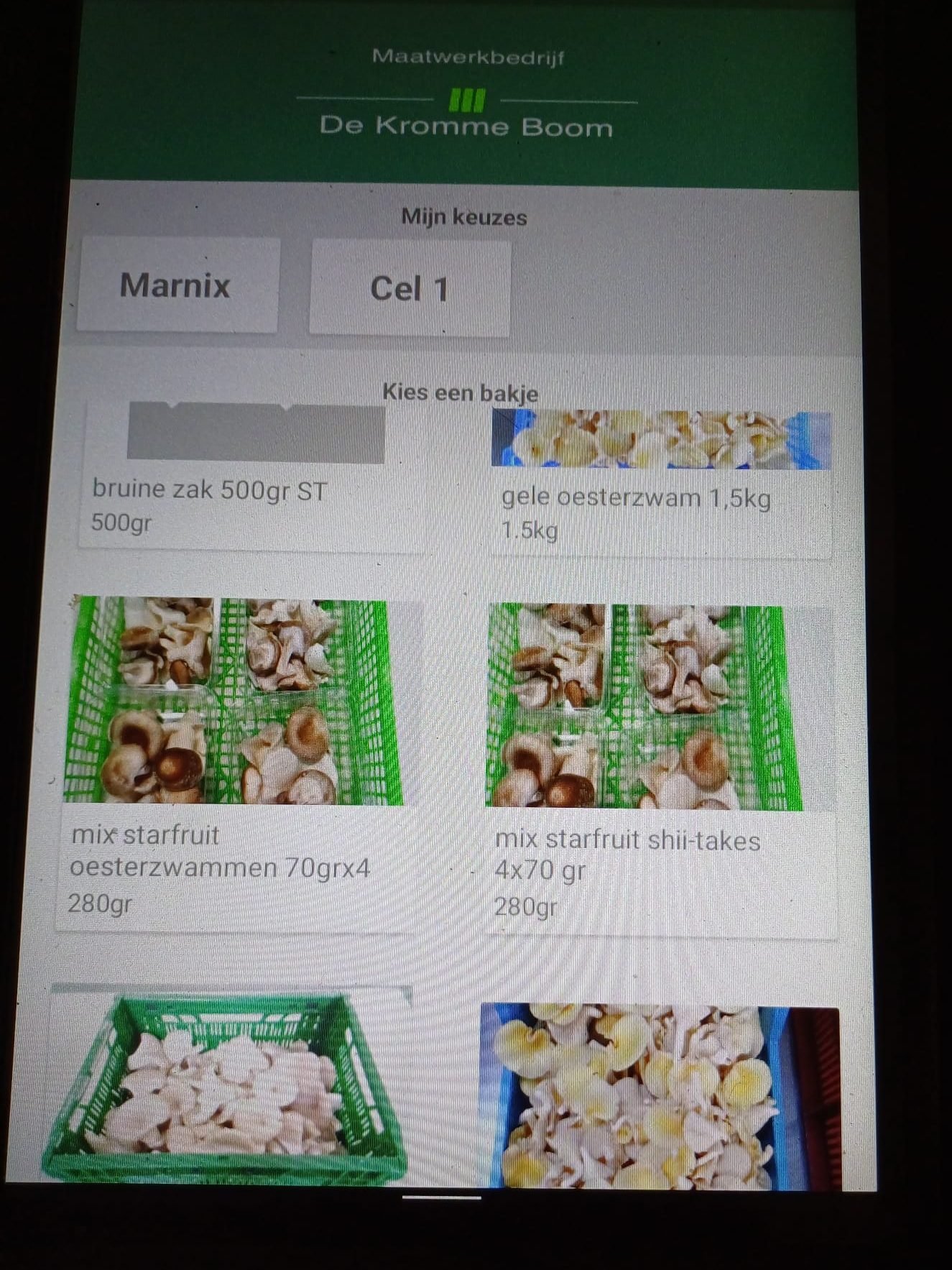
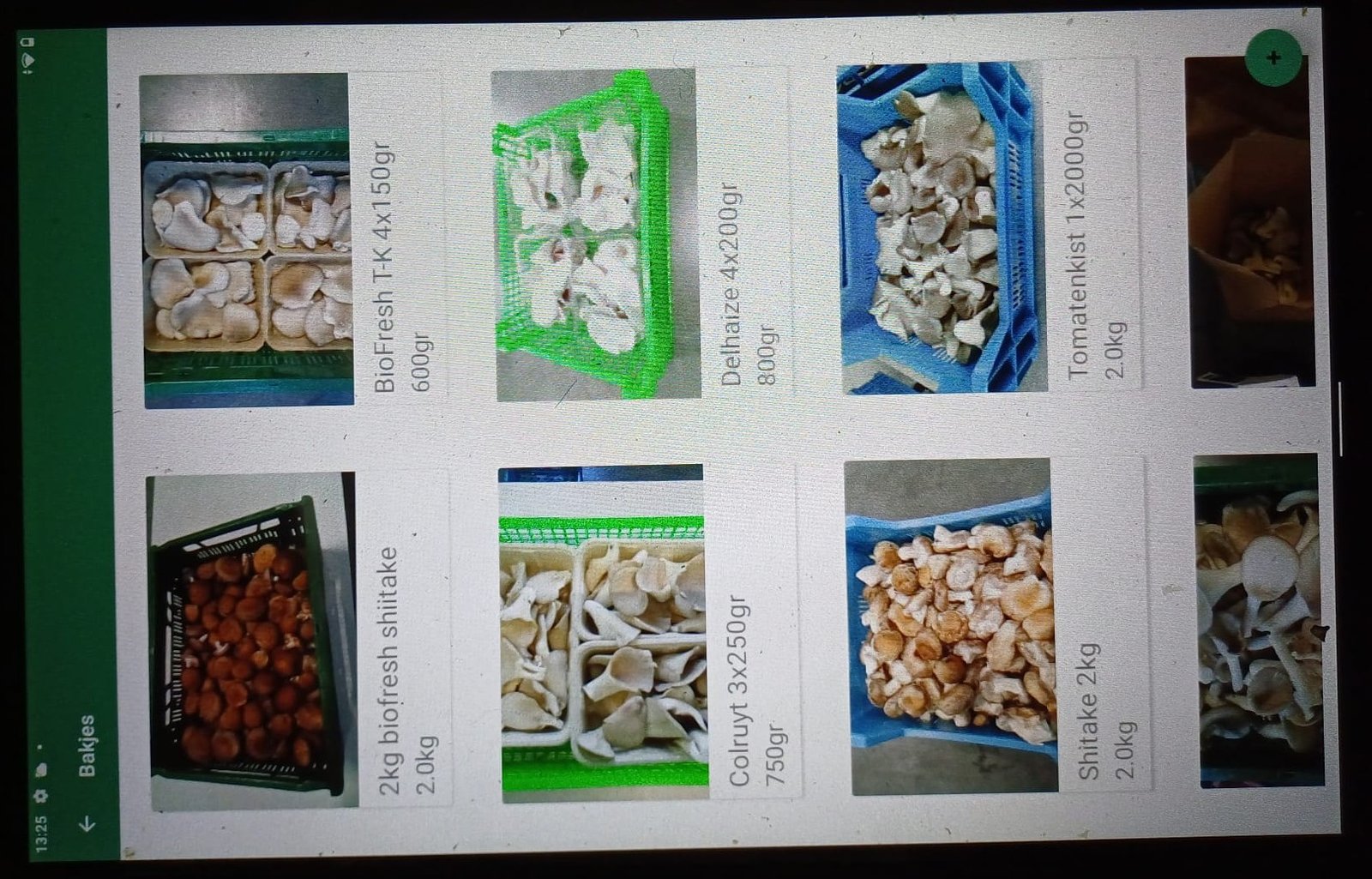
The Solution: Native android Kotlin + Firebse cloud environment
Because this application had to be there quickly and the deadline was very tight, I opted to use google firebase (hosting and data).
Technologies Behind the Project
- Java/Kotlin: As backend with springboot and with xml as frontend, for processing and storing the data and sending it to google cloud + calculating pick yield.
- Google Drive: Used as cheap and reliable platform to run the application as DB .csv backup
- Google Firebase: Hosting the application and future DB.
- Grafana: future to run/calculate all data stored locally via grafana dashboard.
By combining these technologies, I created an application that could be quickly deployed and used in the future as a monolithic component based system.
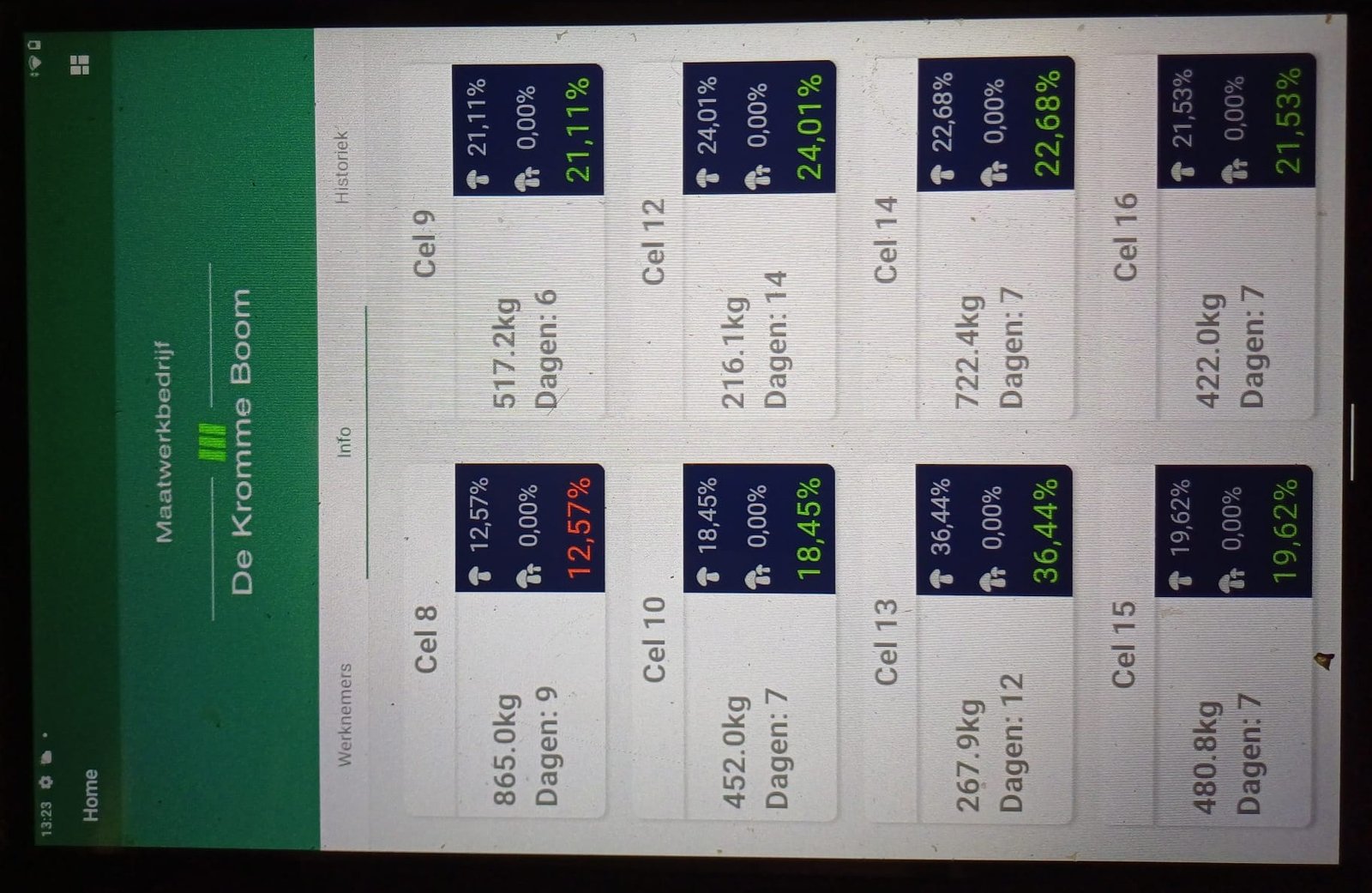
Challenges and Learning Points
Developing this application was not without its challenges. Here are some of the biggest obstacles and the valuable lessons I learned from them:
- Java/Kotlin:Learning Kotlin and working/programming for android took time and was a challenge in itself (learning area)
- Data reliability:
- Architecture
- People with disabilities/backgrounds
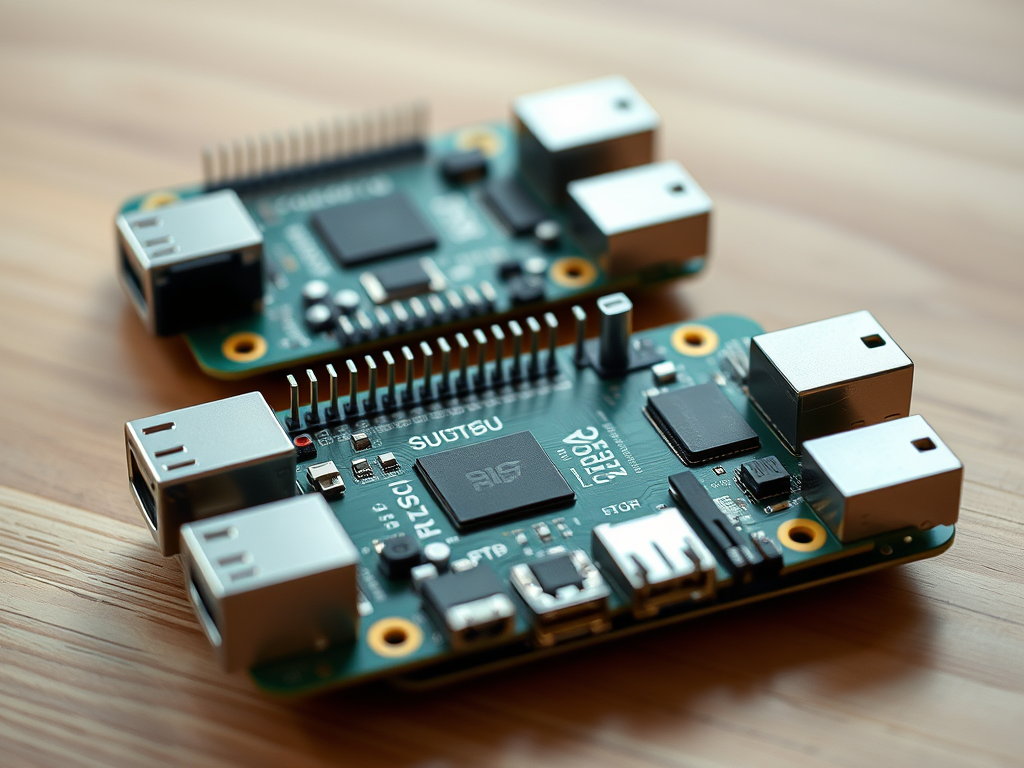
Feature plans
Although the application is now running stable, there are several extensions I would like to implement in the future:
Full microservices extension: Further developing the microservices architecture will make it easier for the application to communicate with other applications without dependence on a central server.
Interface and Visualization: I want to build a user-friendly interface for data visualization so that users can see important trends and alerts at a glance.
Here I learned “don’t reinvent the wheel” but use Grafana dashboards! altough the dashboard on the tablet is mine the data send to the database is visualized with grafana
Conclusion
This project is a great step towards efficient and scalable real-time monitoring in industrial environments. By using Django, MQTT and Raspberry Pi, I have built a platform that is ready for future expansion and can be easily integrated with new applications.
It was a learning experience where I discovered a lot about data processing and the integration of different systems. I am looking forward to further improving and expanding this project with new features!
Discover the possibilities
Are you part of a small NPO committed to helping others? We believe in the power of collaboration and are ready to support NPOs that want to make social impact. Whether you need help with organization, technology, or expanding your network – we are happy to think with you and find ways to grow together.
Is your company looking for meaningful collaborations with social impact? We love to work with companies that want to leverage resources to support NPOs and social projects. With your expertise, resources or financial support, together we can tackle societal challenges and make a lasting difference.
Let’s join forces and build a better future together. Interested? Get in touch and find out how we can make an impact, together!- let’s make a difference together!